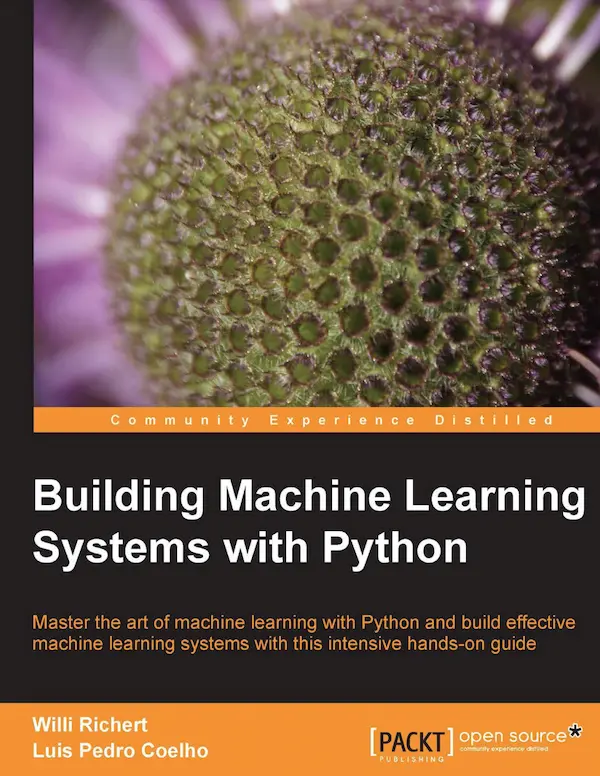
Building Machine Learning Systems With Python
Tác giả: Willi Richert – Luis Pedro Coelho
Thể Loại: Công Nghệ Thông Tin
You could argue that it is a fortunate coincidence that you are holding this book in your hands (or your e-book reader). After all, there are millions of books printed every year, which are read by millions of readers; and then there is this book read by you. You could also argue that a couple of machine learning algorithms played their role in leading you to this book (or this book to you). And we, the authors, are happy that you want to understand more about the how and why.
Most of this book will cover the how. How should the data be processed so that machine learning algorithms can make the most out of it? How should you choose the right algorithm for a problem at hand?
Occasionally, we will also cover the why. Why is it important to measure correctly? Why does one algorithm outperform another one in a given scenario?
We know that there is much more to learn to be an expert in the field. After all, we only covered some of the “hows” and just a tiny fraction of the “whys”. But at the end, we hope that this mixture will help you to get up and running as quickly as possible.
What this book covers
Chapter 1, Getting Started with Python Machine Learning, introduces the basic idea of machine learning with a very simple example. Despite its simplicity, it will challenge us with the risk of overfitting.
Chapter 2, Learning How to Classify with Real-world Examples, explains the use of real data to learn about classification, whereby we train a computer to be able to distinguish between different classes of flowers.
Chapter 3, Clustering – Finding Related Posts, explains how powerful the bag-of-words approach is when we apply it to finding similar posts without really understanding them.
Chapter 4, Topic Modeling, takes us beyond assigning each post to a single cluster and shows us how assigning them to several topics as real text can deal with multiple topics.
Chapter 5, Classification – Detecting Poor Answers, explains how to use logistic regression to find whether a user’s answer to a question is good or bad. Behind the scenes, we will learn how to use the bias-variance trade-off to debug machine learning models.
Chapter 6, Classification II – Sentiment Analysis, introduces how Naive Bayes works, and how to use it to classify tweets in order to see whether they are positive or negative.
Chapter 7, Regression – Recommendations, discusses a classical topic in handling data, but it is still relevant today. We will use it to build recommendation systems, a system that can take user input about the likes and dislikes to recommend new products.
Chapter 8, Regression – Recommendations Improved, improves our recommendations by using multiple methods at once. We will also see how to build recommendations just from shopping data without the need of rating data (which users do not always provide).
Chapter 9, Classification III – Music Genre Classification, illustrates how if someone has scrambled our huge music collection, then our only hope to create an order is to let a machine learner classify our songs. It will turn out that it is sometimes better to trust someone else’s expertise than creating features ourselves.
Chapter 10, Computer Vision – Pattern Recognition, explains how to apply classifications in the specific context of handling images, a field known as pattern recognition.
Chapter 11, Dimensionality Reduction, teaches us what other methods exist that can help us in downsizing data so that it is chewable by our machine learning algorithms.
Chapter 12, Big(ger) Data, explains how data sizes keep getting bigger, and how this often becomes a problem for the analysis. In this chapter, we explore some approaches to deal with larger data by taking advantage of multiple core or computing clusters. We also have an introduction to using cloud computing (using Amazon’s Web Services as our cloud provider).
Appendix, Where to Learn More about Machine Learning, covers a list of wonderful resources available for machine learning.